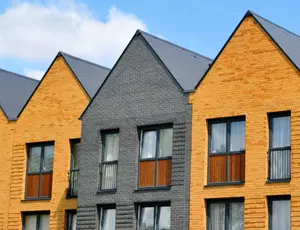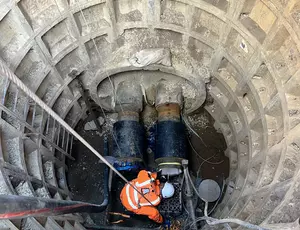What is a heat network?
A heat network is a system that uses a singular central heat source to distribute hot water through a network of insulated pipes to multiple individual dwellings. The structure is usually used to fulfill heating and hot water requirements in apartment complexes. However, as the UK continues to adopt the innovation we are seeing its use be adopted in large-scale buildings associated with educational and commercial operations.
When reading this article it is important to understand that when we discuss heat networks we are referring to district heating, as opposed to communal heating. Both networks have a central plant delivering heat to multiple outputs, however, district heating delivers to multiple buildings while communal heating delivers to several individuals within one building.
As heat networks deliver low carbon, cost effective heat, the UK government has been quick to acknowledge the solution as a vital solution in an accelerated move towards low carbon energy systems. Learn more about the Heat Network Transformation Programme.
Why choose heat networks?
Heat networks, otherwise known as district heating schemes, currently supply around 2% of the UK's heat. But with an estimated 50% of buildings in the UK located in areas of suitable density for heat networks, the system has the potential to have a far greater impact.
Driving forward low carbon energy solutions such as heat networks makes achieving net zero considerably more achievable, as we drastically reduce the use of fossil fuels by opting to deliver heat from communal heat sources.
How are heat networks supplied?
There are many different technologies that can provide the input to a heat network, including: Power stations, Energy from Waste (EfW) facilities, Industrial processes, Biomass and biogas fuelled boilers, Combined Heat and Power (CHP) plants - including gas-fired units, Fuel cells, Heat pumps, Geothermal sources, Electric boilers & Solar thermal arrays.
What are the benefits of heat networks?
Why are district heating schemes so desirable when it comes to decarbonisation?
Heat networks supply heat from a central source to consumers, via a network of underground pipes carrying hot water. They can cover a large area or even an entire city, or be more local, supplying a small cluster of buildings. This avoids the need for individual boilers or electric heaters in every building. Heat networks are sometimes described as 'central heating for cities', with the central heat source often referred to as ‘the energy centre’.
Heat is brought into each building through a heat exchanger which, for a residential connection, is about the same size as a small gas boiler. All the same heating controls are available and to the end-user the central heating and hot water system works in the same way as a domestic gas-fired central heating system, without the need for any combustion to take place inside the building. Heat networks can be various sizes and serve various combinations of building types. They can also be extended over time, and new heat demands and heat sources can be added to the network.






